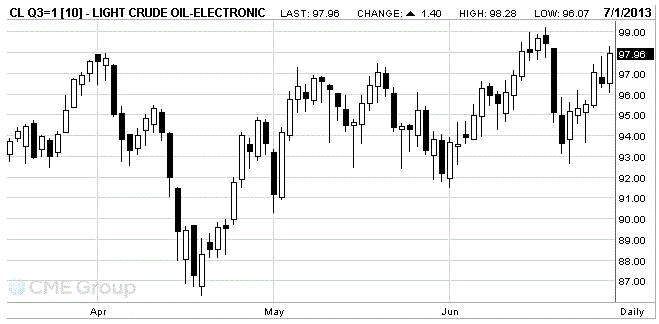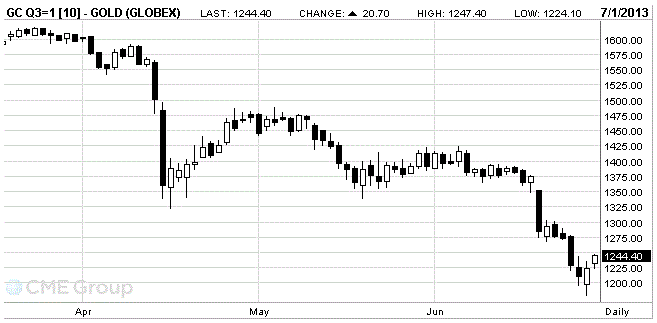Notícias do Mercado
-
16:40
Oil: an overview of the market situation
The price of oil increased significantly, rising at the same time above $ 103 a barrel, as more encouraging data from Europe and better-than-expected, official data from China balanced the uncertainty about the prospects for U.S. monetary policy.
As it became known today, the index of business activity in the euro area industry (Manufacturing PMI) in June rose slightly stronger than originally assumed. These data are another sign that the currency bloc's economy begins to emerge from a state of prolonged recession.
The index rose to 48.8 points last month compared to 48.7 points in May, according to the Markit Economics. Economists expected the continued importance of 48.7 points.
Although the index value below 50 suggests decline of business activity, the rate of decline of activity is now slowing, which is encouraging.
The growth in June was the strongest since July 2010 Economists believe that in the second quarter ended 18-month decline of the economy in the eurozone.
According to the updated forecast of the European Commission of the euro area's GDP will shrink this year by 0.4%. In 2012, euro area GDP down by 0.6%.
We also add that the markets continue to watch the U.S. Federal Reserve's pending guidance on the future of its program of bond purchases. Recall that last month the head of the Federal Reserve signaled that the U.S. central bank may go for a reduction in the amount of bond purchases at its September meeting, which could strengthen the dollar. But the situation will also depend on the U.S. labor market. Add that many investors are waiting for Friday's employment report, which just may change the size of the program. It should be noted that the weak report would undermine the dollar again and raise the price of oil.
The cost of the August futures on U.S. light crude oil WTI (Light Sweet Crude Oil) rose to 97.96 dollars a barrel on the New York Mercantile Exchange.
August futures price for North Sea Brent crude oil mixture rose 1.06$ to $ 103.07 a barrel on the London exchange ICE Futures Europe.

-
16:21
Gold: an overview of the market situation
Gold prices rose today, recovering after fixing the largest quarterly loss in history, which was associated with stabilization of the dollar ahead of important U.S. data, which is expected to be able to provide more clues regarding the prospects of stimulus measures. Recall that last week, concerns about the decline in asset-purchase program by the Federal Reserve led to a drop in gold prices to the lowest level in three years.
According to the data, in II quarter of 2013, gold prices have fallen more than 23%, which was a record decline since 1970, when the market of precious metals only formed. Recall that the previous most significant quarterly decline in gold prices is dated the I quarter of 1982, when the decline in the price of gold by 18%. Silver for the II quarter of this year fell by 32%.
According to analysts and experts, the mass exit of investors from the market of precious metals associated with fears of the past to strengthen the U.S. economy, which automatically leads to an increase in bond yields and, consequently, of the U.S. dollar, which in turn will dramatically reduce the cost of precious metals such as gold and silver.
We also add that the gold reserves in exchange-traded funds dropped significantly since the beginning of this year. Recent data showed that stocks in the SPDR ETF Gold Trust fell nearly 13 million ounces this year. In addition, we add that hedge funds and money managers reduced their bets on the purchase of gold futures and options to the lowest level in six years.
In addition, we note that even lower prices in the last few weeks has not been able to rekindle physical demand in Asia, which has traditionally been the largest buyer of gold.
The cost of the August gold futures on COMEX today rose to 1244.40 dollars an ounce.

-